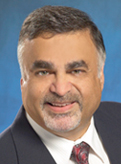|
Conference Workshops offer the bonus of additional educational experiences for SESUG Conference attendees. We have talented, recognized, and experienced instructors prepared to share their knowledge in these 4-hour sessions.
SESUG is scheduling three concurrent workshops this year on Sunday, October 14 from 11:30 am – 3:30 pm. A light lunch will be served for workshop attendees.
The workshops cover a wide variety of topics and skill levels. These 4-hour workshops will appeal to everyone interested in exceptional in-depth training. Please note that workshops are an extra fee event at SESUG.
| Early Online Registration Fee $125 |
| Regular Onsite Registration $150 |
| Administrative Fee for Workshop Only $25 (no conference registration) |
For information on registering for a workshop or the conference, please see
Registration Information.
 Clinical Graphs using SAS® 9.2
Clinical Graphs using SAS® 9.2
Intended Audience: All Levels
Instructor: Sanjay Mantage, SAS
Do you wish you could create modern clinical graphs using SAS? Have you heard that it is difficult to create such graphs using SAS? If the answer is yes to any of these questions, this course is for you. This half-day course will cover, in detail, how to create the graphs used in Health and Life Sciences industry, including graphs commonly used for analysis of safety data for clinical trials. In this course, we will build many such graphs from scratch using the most appropriate graph tools from the ODS Graphics tool set, including SG Procedures and GTL.
Course outline:
- Brief review of ODS Graphics, SG Procedures and GTL
- Create the following graphs using ODS graphics:
- Distribution of ASAT by Time and Treatment
- Distribution of LFT Values by Treatment
- Matrix Display of Maximum LFT Values
- LFT Patient Profile
- Hazard Function of Adverse Event
- Adverse Events Timeline
- Medications over time
- Lab results panels over time
- Symptoms over Time by Severity
- Top Twenty Adverse Events by Treatment
- Liver Function Test Panel
- LFT by Trial Day for At Risk Patients
- Survival distribution by Time and Illness
- Growth v/s BMI Chart
- And more
BIO:
Sanjay Matange is a Senior Development Manager in the Data Visualization Division at SAS. Sanjay is responsible for the development and support of the ODS Graphics system, including the Graph Template Language (GTL), Statistical Graphics (SG) procedures, ODS Graphics Designer, and other related graphics applications. Sanjay’s team is also responsible for development of interactive visualization components used in many SAS Products and Solutions such as Enterprise Miner, Forecast Studio, Risk Analysis, Warranty Analysis and many more. Sanjay has been involved in the development of graphics software at SAS for over 20 years. Sanjay has graduate degrees in Computer Science from NC State University.

 SAS Administration: Understanding Architecture and Administration
SAS Administration: Understanding Architecture and Administration
Intended Audience: SAS administrators and those who play a role in managing the SAS environment
Instructor: Greg Nelson, ThotWave Technologies, LLC
Since its debut in 2004, SAS®9 has raised the importance of a well-designed SAS environment and the role of information technology for successful SAS environments. From design and installation to management and monitoring, the role of the SAS administrator has risen to a state of prominence in most SAS shops.
The implementation of business analytics in any organization requires an integrated approach that bridges both IT and the business in a collaborative fashion. This workshop is designed to help both the IT professional understand SAS as well as the SAS programmer understand IT - and how SAS should be managed.
We will guide the participant through the various SAS client and server components and outline how SAS works. Using examples from SAS Enterprise BI Server, SAS Data Integration, SAS Data Quality, SAS®Scalable Performance Data Server® and SAS® Grid Computing, we'll turn concepts into reality through animations that highlight various SAS architectures in detail, show which parts of SAS have to be managed, and introduce best practices for monitoring and maintaining your SAS environment.
Workshop topics will include:
- SAS administration roles and responsibilities
- Adoption of new technologies, including managing hot fixes and upgrades
- System monitoring and performance and capacity planning
- Managing metadata
- Understanding security administration and roles
- Best practices in data governance, architecture and business processes
- Developing organizational competencies around BI and analytics, including creating a center of excellence
The speaker is an expert in performance management, system design, and architecture and business integration.
BIO:
Greg is a global healthcare executive with more than two decades of broad leadership experience, across several organizations in life sciences and global healthcare. He has extensive software development life cycle experience and knowledge of clinical informatics and regulatory requirements, and he has delivered numerous projects in validated environments. He collaborates with business stakeholders across organizations, gathering and analyzing their requirements and architecting solutions that are scalable and robust.
He leads implementation teams that are global in scope, and has provided direction to projects covering Business Change Management, Process Improvement, Business Intelligence, Analytics, Data Warehousing, Master Data Management, Data Governance, Data Quality, and Research Informatics. Greg has developed strong partnerships with senior management within business and information technology organizations to support transparent project delivery and risk management; he manages stakeholders’ expectations of project delivery.
He collaborates with stakeholders across organizations, gathering and analyzing their requirements and architecting solutions that embody thinking data® – data which is more predictive, more accessible, more usable, and more coherent.

 Creating Complex Reports
Creating Complex Reports
Intended Audience: Beginner with experience in reporting and Intermediate
Instructor: Cynthia Zender, SAS
This seminar is based on the SAS Global Forum paper of the same name (
http://www2.sas.com/proceedings/forum2008/173-2008.pdf ). In the seminar, we will investigate how eight (8) complex reports were produced with SAS. All the code that produced the reports will be covered, in detail. All report output is produced using ODS (rather than LISTING) output. The reports to be covered include three versions of a standard demographic report, producing a color-banded report with PROC TABULATE, producing a report which uses special fonts (Bissantz SparkFonts) to produce a sparkline report, several graph examples and several unique report ordering examples. Procedures/Topics to be covered include: REPORT, TABULATE, FORMAT, MEANS, FREQ, Macro processing and DATA _NULL_ programming (as used to produce the reports). Refer to the SAS Global Forum paper to see the actual reports which will be discussed in detail.
BIO:
Cynthia Zender has been with SAS since 1996 as an instructor and course developer. She currently serves as the Curriculum Manager for the Report Writing and Output Delivery System curriculum. Cynthia is a SAS Certified Professional, with over 25 years of experience programming and reporting with SAS. Prior to joining SAS, she worked with a variety of industries (including education, public utilities, and telecom), using SAS for application development and report writing.

|